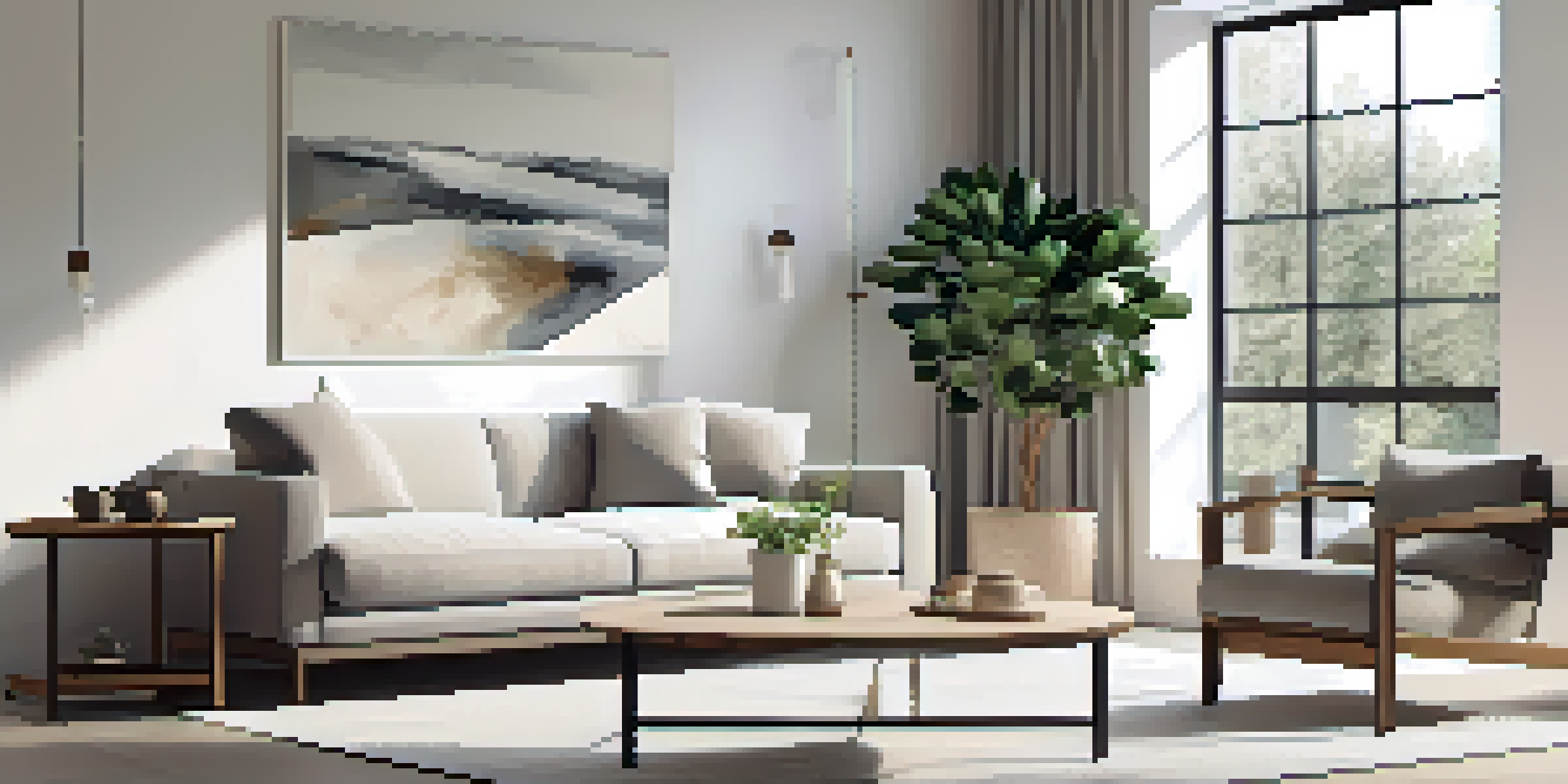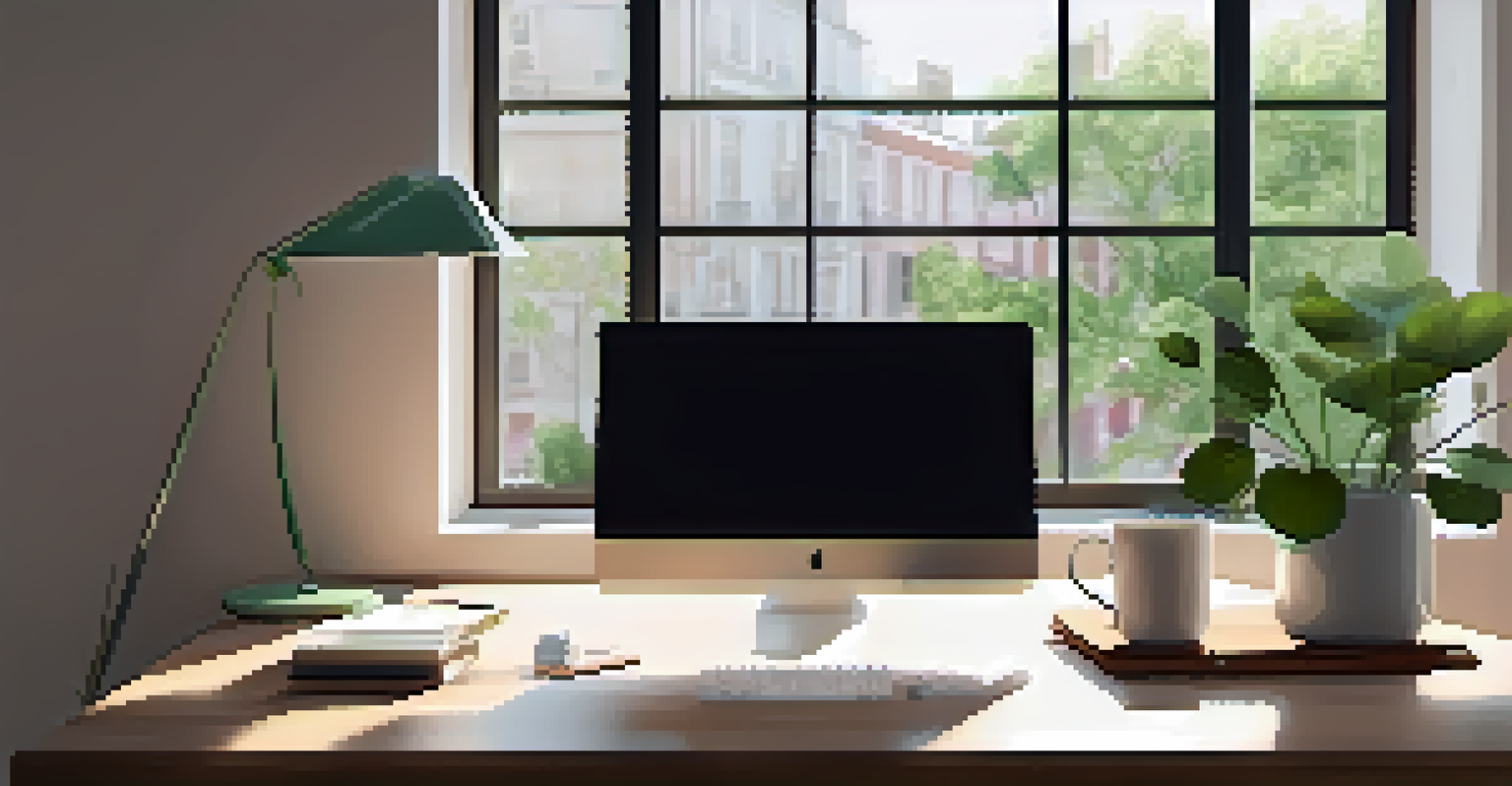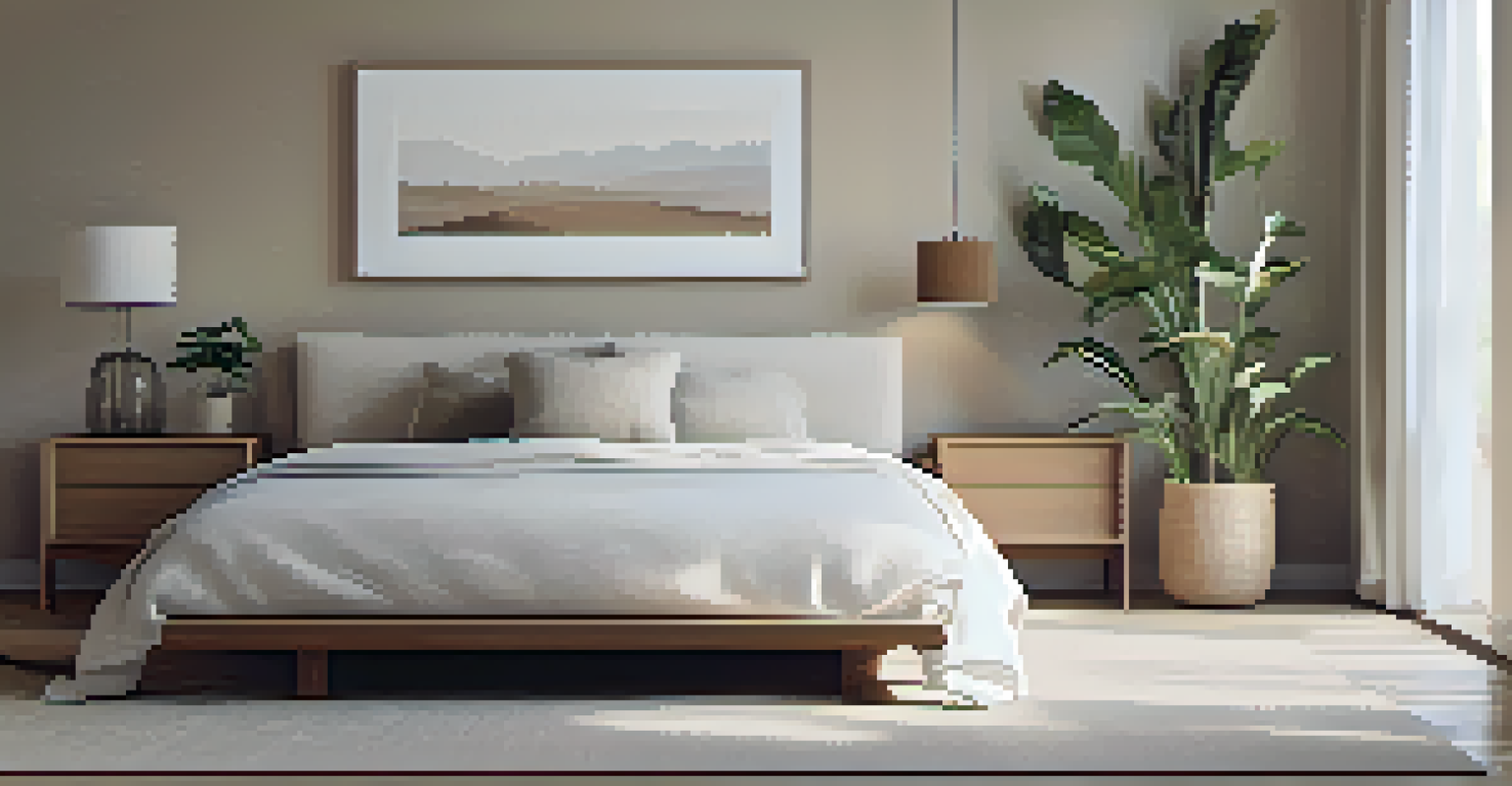Minimalism: The Art of Simple and Modern Living Spaces

Understanding Minimalism: More Than Just a Trend
Minimalism is often seen as a design trend, but it's more of a lifestyle choice. At its core, minimalism promotes the idea of 'less is more.' This philosophy encourages us to let go of excess belongings and distractions, allowing us to focus on what truly matters.
The ability to simplify means to eliminate the unnecessary so that the necessary may speak.
Imagine a clutter-free space that brings you peace and clarity. This is the essence of minimalism, where each item in your home serves a purpose or brings you joy. It's about curating your environment to reflect your values and aspirations, rather than the latest fads.
Ultimately, embracing minimalism can lead to a more fulfilling life. By prioritizing quality over quantity, we can create spaces that inspire creativity, relaxation, and connection with ourselves and others.
Decluttering: The First Step Toward Minimalism
Decluttering is the foundation of a minimalist lifestyle. It involves assessing your belongings and deciding what to keep, donate, or discard. This process can be liberating, as it helps you shed the weight of unnecessary possessions.

Start small—perhaps with a single drawer or closet. As you sort through your items, ask yourself if each piece adds value to your life. If it doesn’t, it might be time to let it go. This not only clears physical space but also mental clutter.
Minimalism: A Lifestyle Choice
Minimalism encourages us to prioritize quality over quantity, fostering a more fulfilling life by focusing on what truly matters.
Once you've decluttered, maintaining this simplicity becomes easier. Regularly reassess your belongings and practice mindful consumption, ensuring that each new item you bring into your life aligns with your minimalist values.
Designing Minimalist Spaces: Key Principles to Follow
When designing a minimalist space, simplicity is key. Start with a neutral color palette that promotes calmness and serenity. Whites, grays, and soft earth tones can create a cohesive look that feels both modern and inviting.
Simplicity is the ultimate sophistication.
Incorporate functional furniture that serves multiple purposes. For example, a coffee table with storage can help keep your space tidy while offering a stylish focal point. This approach emphasizes practicality without sacrificing aesthetics.
Finally, focus on quality over quantity in your decor. Select a few statement pieces that resonate with you, whether it's a striking piece of art or a unique sculpture. These intentional choices add character and depth to your space without overwhelming it.
Embracing Natural Light in Minimalist Design
Natural light is a hallmark of minimalist design, creating an airy and open atmosphere. Large windows and open layouts invite sunlight to flood your spaces, enhancing the feeling of tranquility. This connection to the outdoors can significantly uplift your mood.
Consider how you can maximize natural light in your home. Avoid heavy drapes that block sunlight; instead, opt for sheer curtains that allow light to filter through while maintaining privacy. Reflective surfaces, like mirrors, can also amplify light and make spaces feel larger.
Decluttering for Mental Clarity
The process of decluttering not only clears physical space but also alleviates mental clutter, promoting a sense of control and tranquility.
By prioritizing natural light, you not only improve your living environment but also promote a healthier lifestyle. Sunlight is known to boost mood and energy levels, making it an essential element in minimalist living.
Choosing the Right Materials for Minimalist Spaces
The materials you choose play a pivotal role in achieving a minimalist aesthetic. Opt for natural materials like wood, stone, and metal that offer warmth and texture without unnecessary embellishments. These elements contribute to a sense of groundedness in your space.
Sustainable materials are increasingly popular among minimalist enthusiasts. They not only reduce environmental impact but also often feature simpler designs that align with minimalist values. For instance, reclaimed wood furniture adds character while being eco-friendly.
When selecting materials, think about durability and maintenance as well. High-quality materials may have a higher upfront cost, but they tend to last longer, ultimately supporting a minimalist lifestyle that values longevity and simplicity.
Incorporating Greenery: The Balance of Nature and Minimalism
Integrating plants into your minimalist space can create a beautiful balance between nature and simplicity. Houseplants not only purify the air but also add a touch of vibrancy to your home. Choose low-maintenance varieties like succulents or snake plants for effortless upkeep.
Placing greenery strategically can enhance your minimalist design. Consider using simple planters that complement your decor, or hanging plants to save floor space while adding dimension. This subtle incorporation of nature can bring a sense of calm and vitality.
Natural Light Enhances Spaces
Maximizing natural light in your home creates a serene atmosphere, uplifting your mood and enhancing the overall minimalist experience.
Moreover, the act of caring for plants can be a mindful practice, grounding you in the present moment. This connection to nature aligns perfectly with the principles of minimalism, fostering a peaceful and rejuvenating living environment.
The Psychological Benefits of Minimalism
Beyond aesthetics, minimalism offers significant psychological benefits. Living in a clutter-free environment can reduce anxiety and promote a sense of control. When your surroundings are organized, your mind can also find clarity and focus.
Many people report feeling more creative and productive in minimalist spaces. With fewer distractions, it becomes easier to concentrate on tasks or engage in hobbies. This newfound freedom can lead to a more fulfilling and balanced life.

Ultimately, minimalism encourages intentional living. By simplifying your space, you’re also simplifying your mind, allowing for deeper connections with yourself and those around you. It’s a holistic approach that nurtures both your environment and well-being.